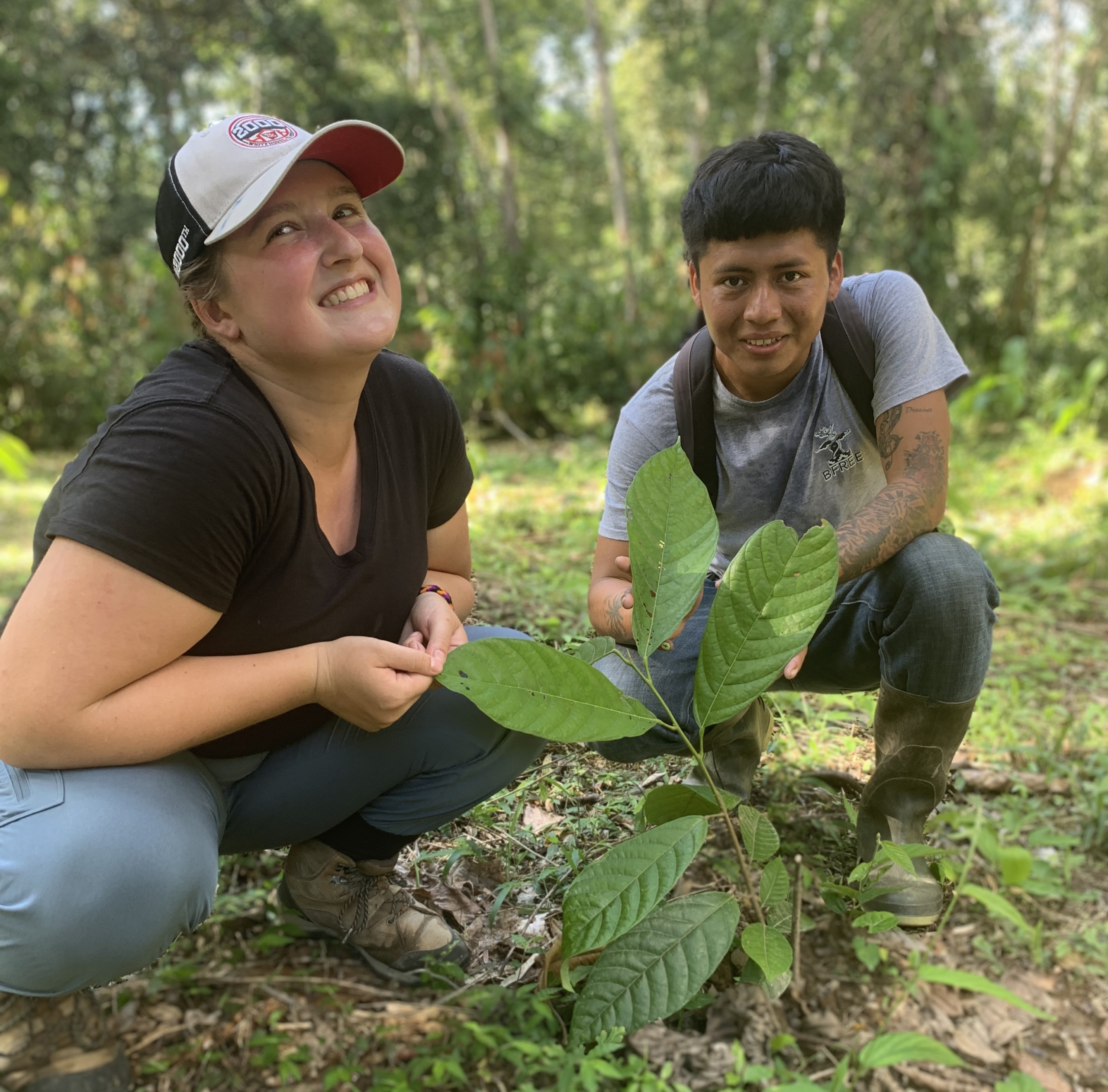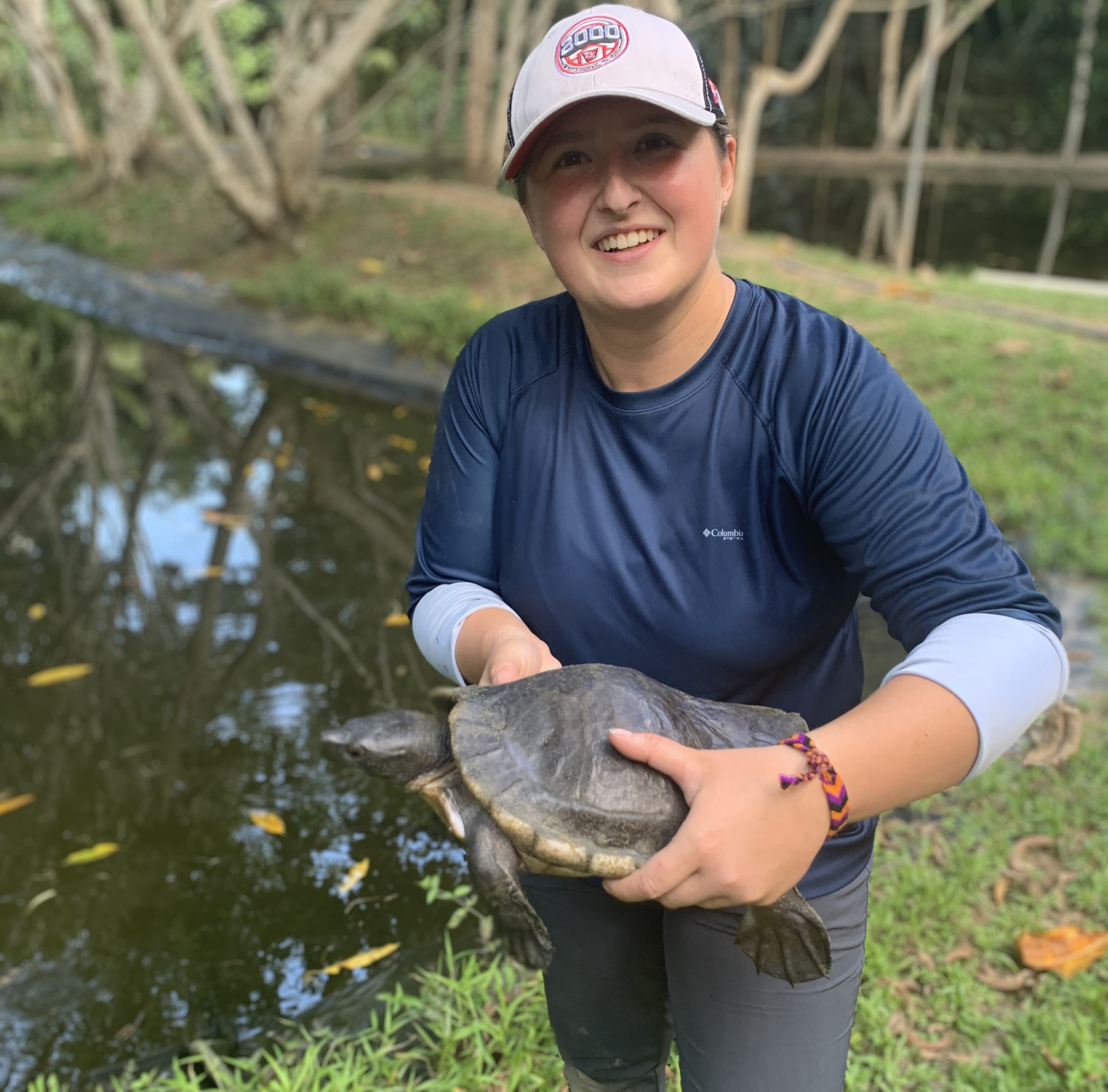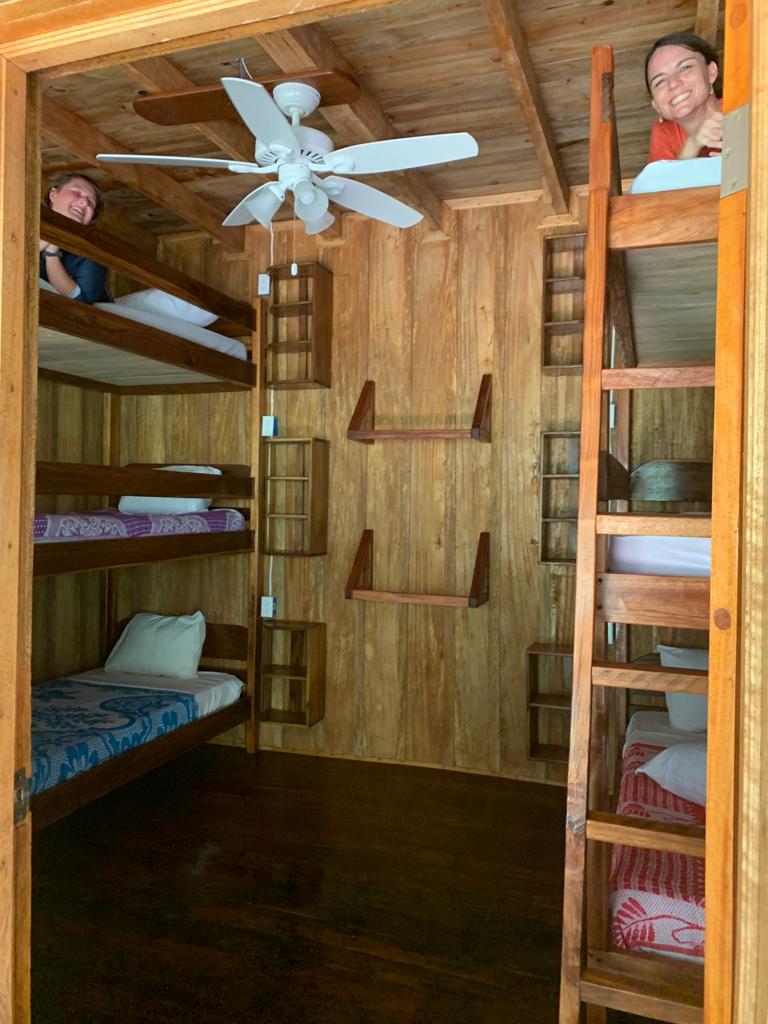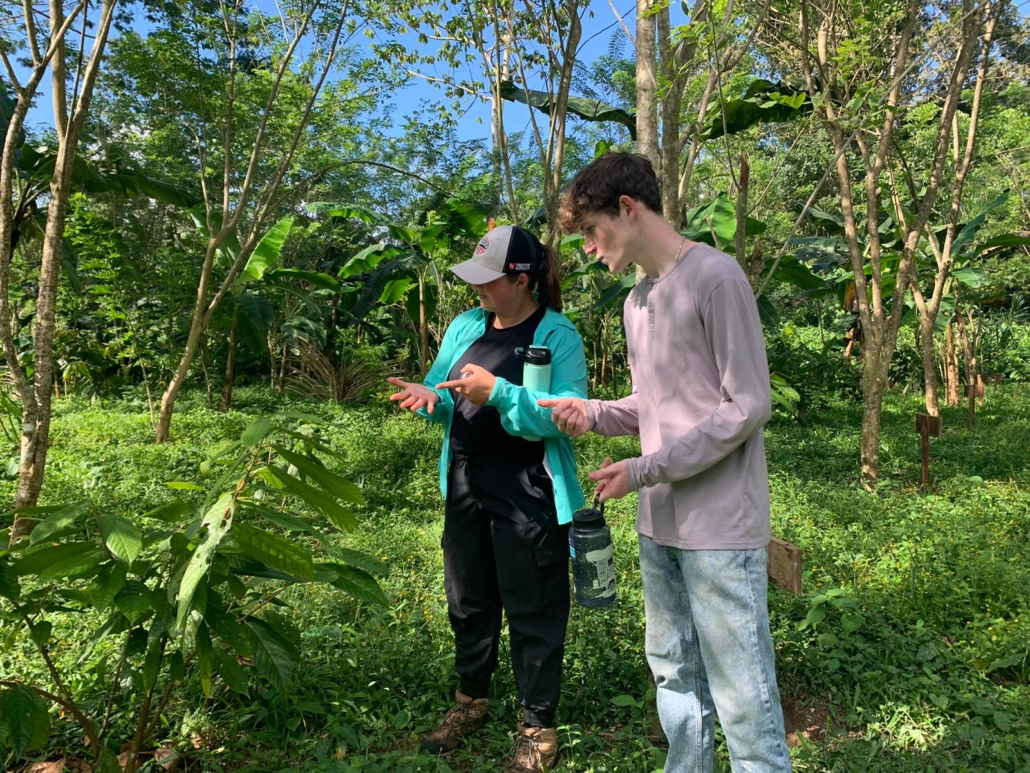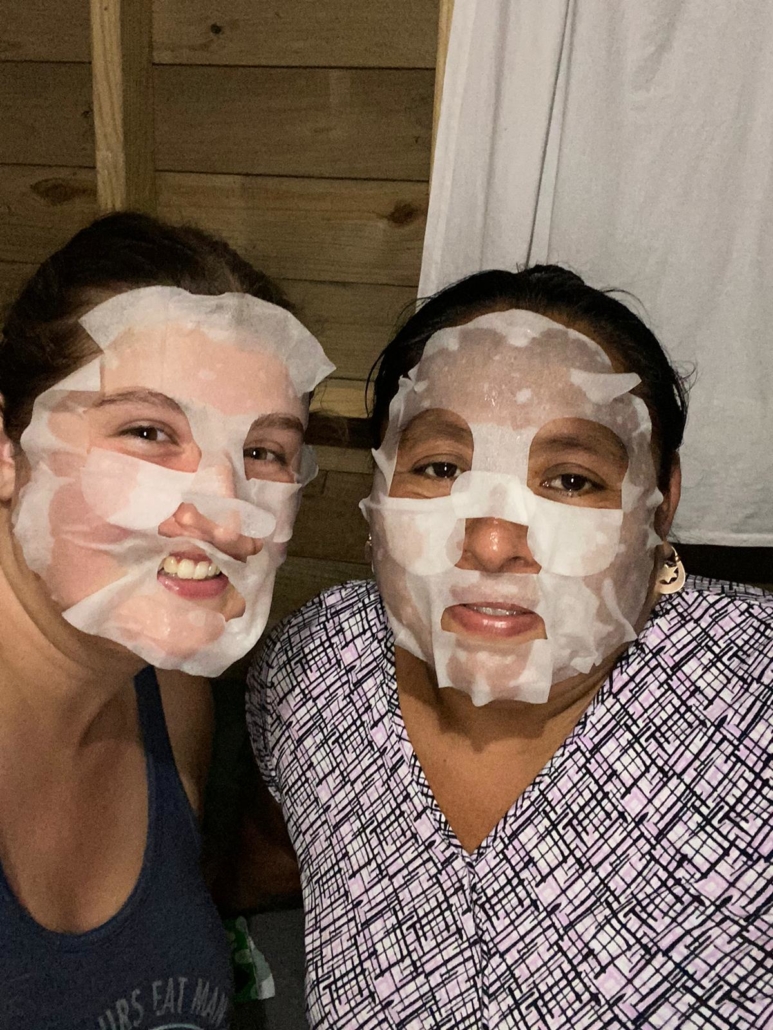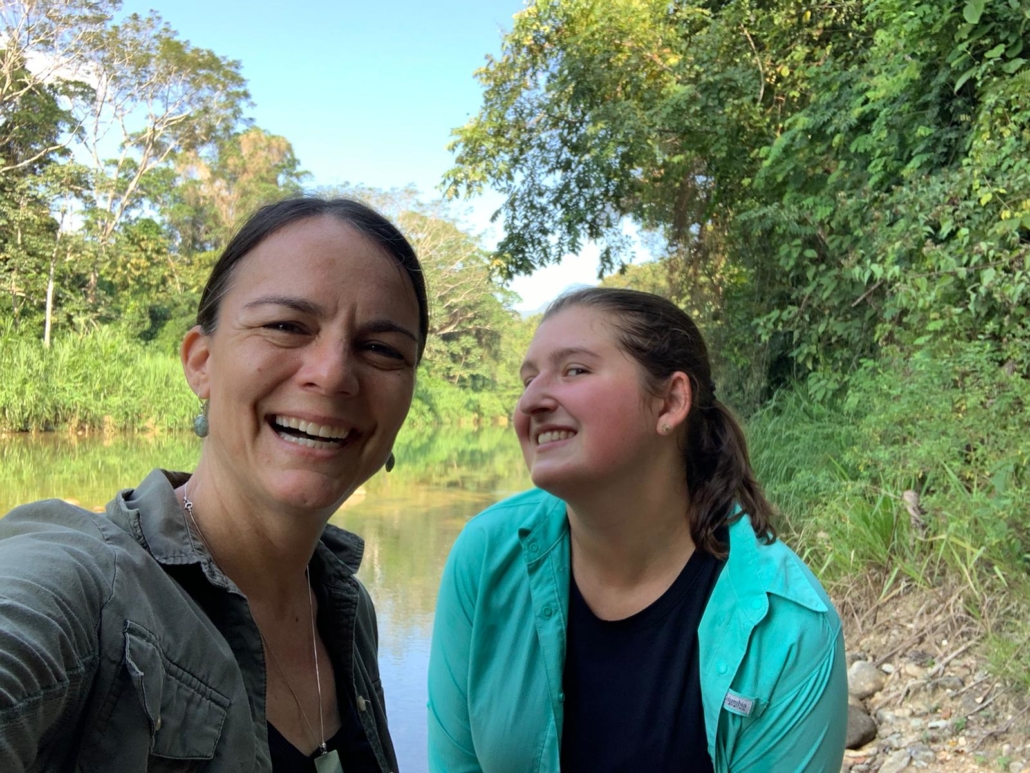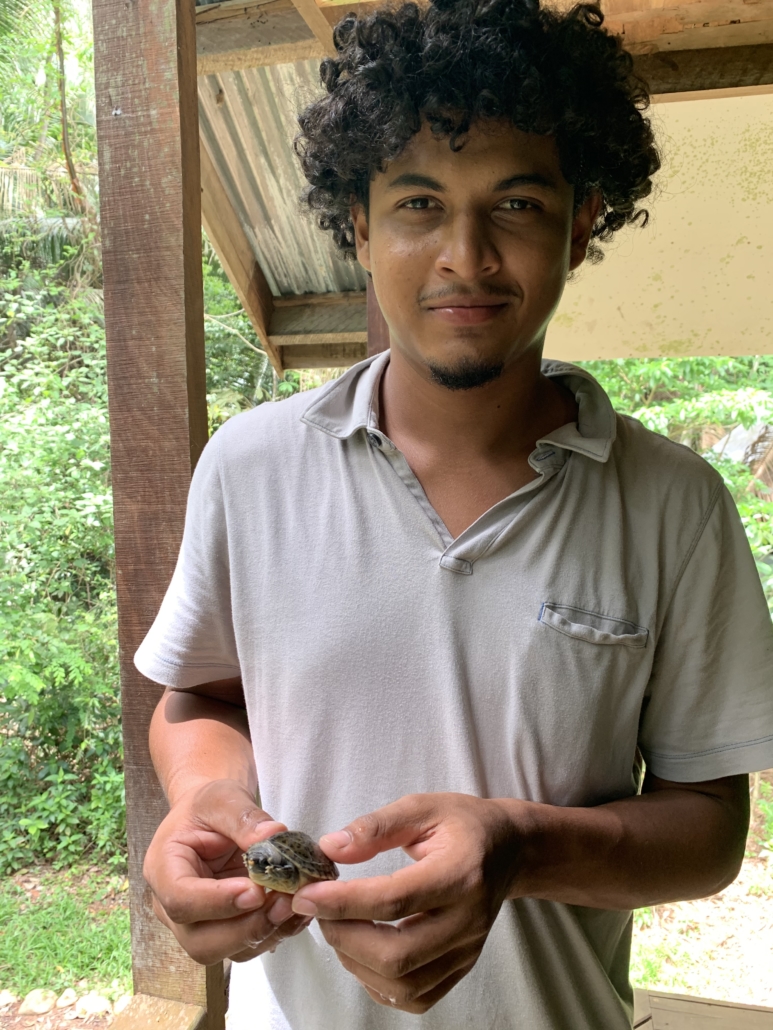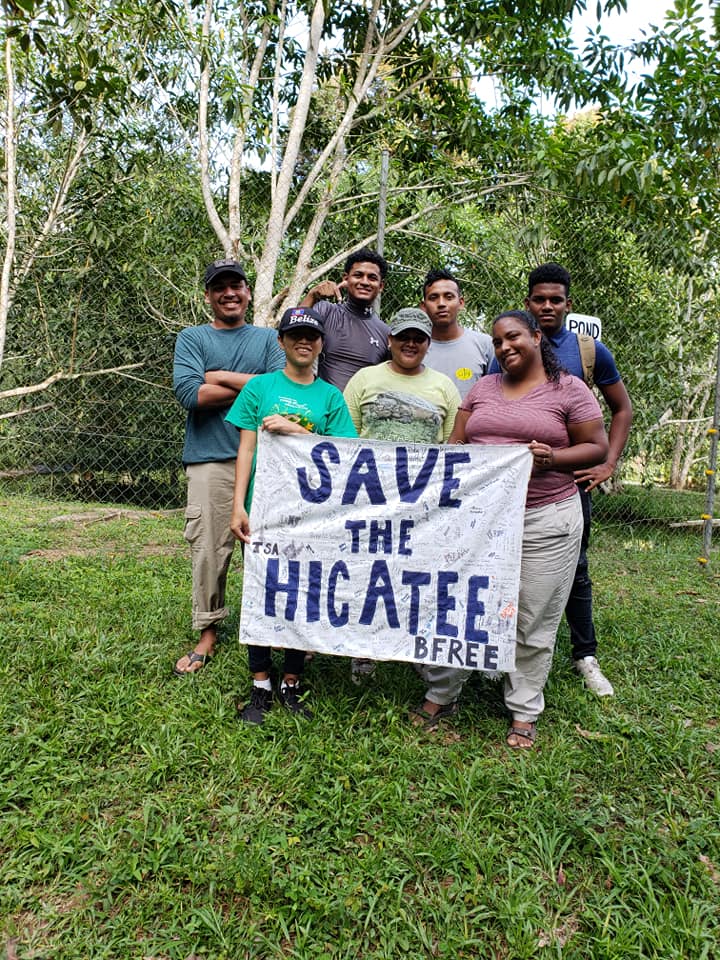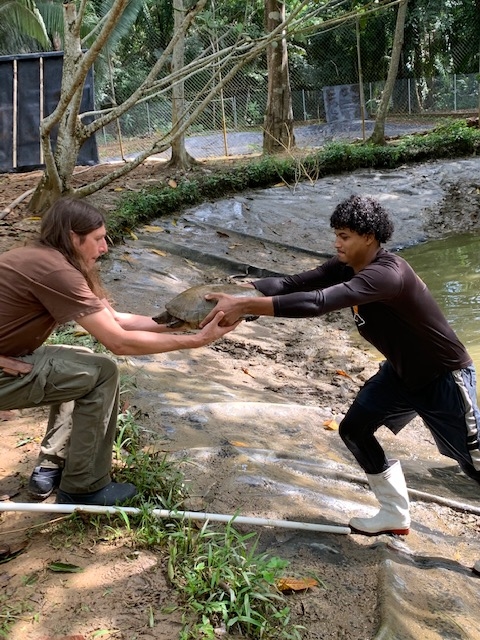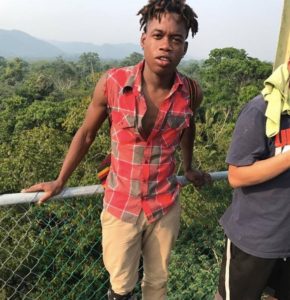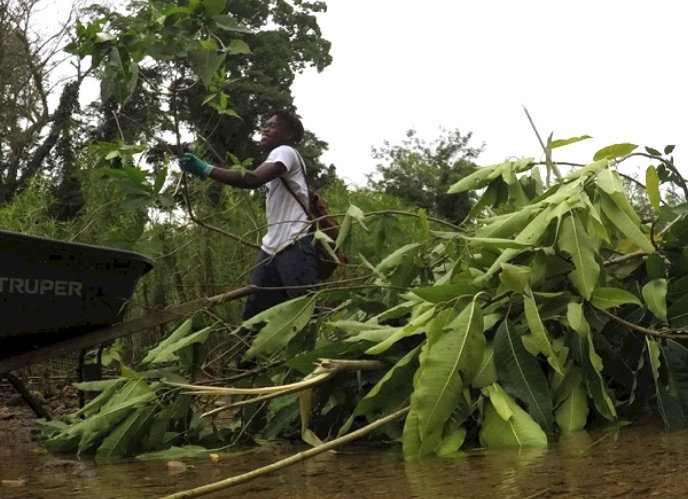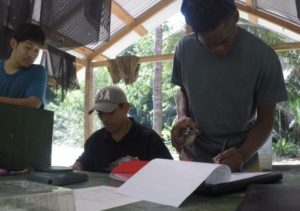Andrew Choco Joins BFREE Full-time as Wildlife Fellow
Hey there! My name is Andrew Choco, and I am from Trio, a community adjacent to BFREE. I was raised in Bella Vista Village, where my connection with nature was somewhat limited. However, after watching documentaries on Animal Planet, my interest in the natural world was sparked. These programs ignited a deep passion for wildlife conservation and inspired me to pursue a career dedicated to protecting animals. I envisioned myself rescuing injured wildlife and exploring their habitats, all while being filmed by camera crews. Over time, my passion only grew, strengthening my commitment to turning this dream into a reality.
This commitment to conservation led me to pursue an associate’s degree in Natural Resources Management, which I completed at Independence Junior College (IJC). I am now looking forward to graduating in June. This milestone has opened new doors and has brought me closer to my aspirations. Along the way, I worked various part-time jobs, including construction labor. One day, while working, I witnessed a group of workers catch a large turtle from the water. At that time, I didn’t realize it was a Hicatee, but I watched in dismay as it was captured and slaughtered. The sight of animals suffering has always been deeply distressing to me, and this event made me feel helpless, especially since I didn’t have the knowledge at the time to act or understand the significance of the species.
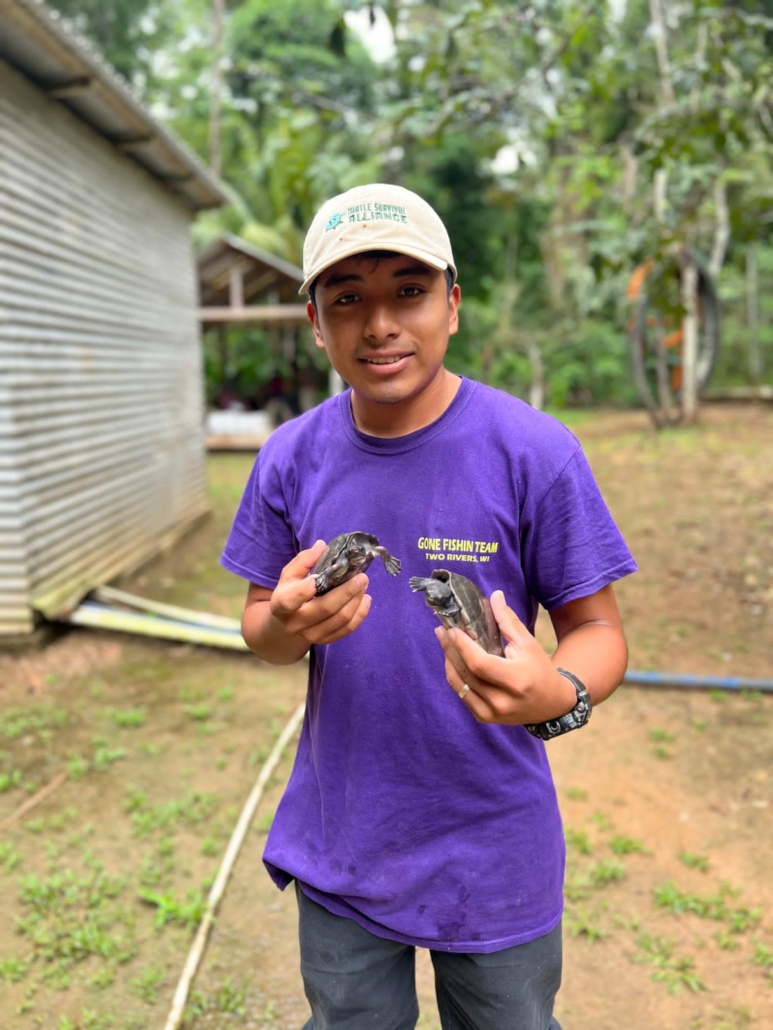
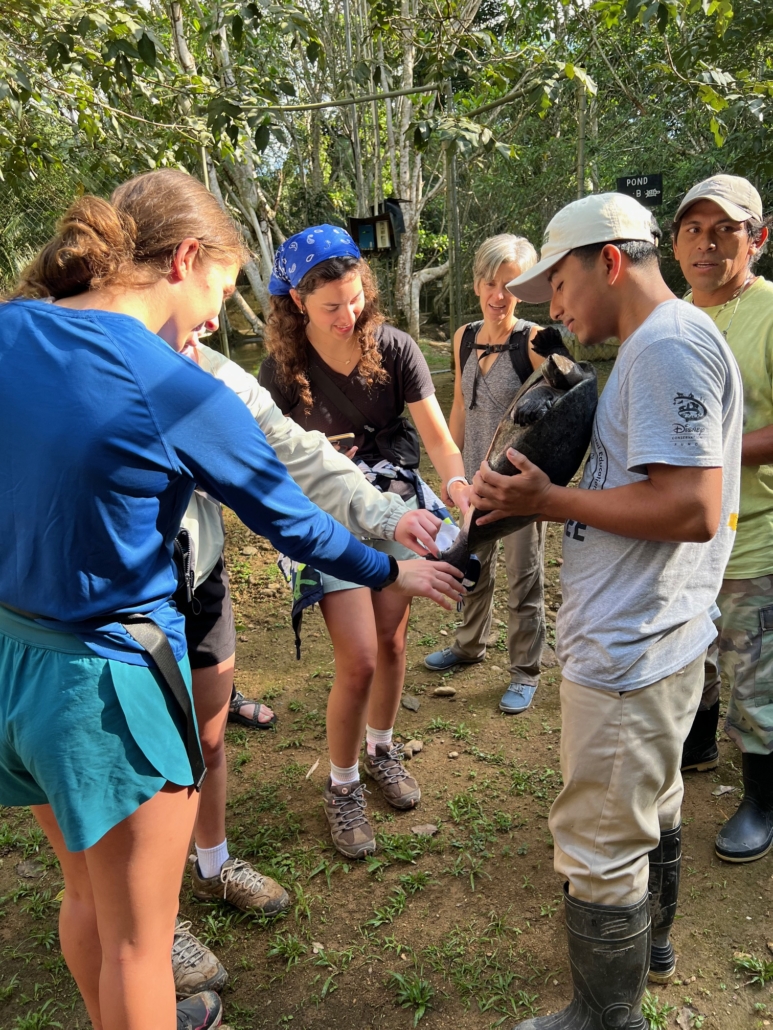
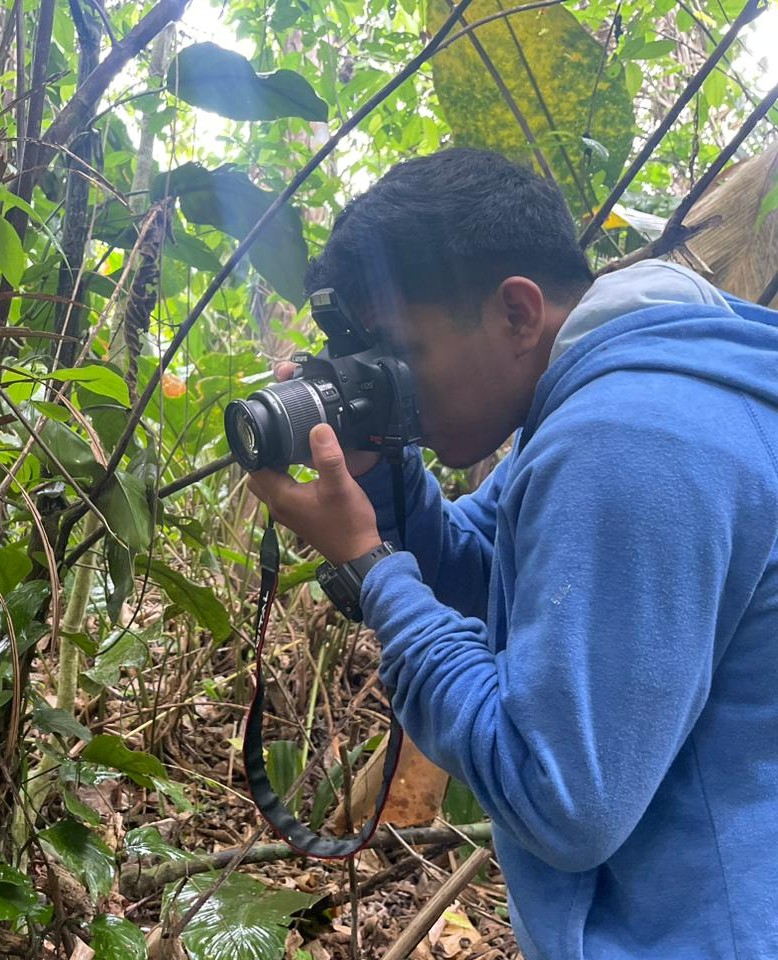
A few weeks later, during my third semester, Mr. Leomar Longsworth informed me about a volunteer opportunity for the bi-annual health assessment of the Hicatee at BFREE. Although I had not previously heard of BFREE, I learned that my school had a close relationship with the organization and often took students there on educational trips. I decided to research BFREE’s work, particularly their efforts with the Hicatee, and felt compelled to apply for the opportunity. I recalled the experience in Hopkins and felt a strong desire to contribute to the conservation of this species.
There were many competitive applicants and only two positions available, I wasn’t accepted but I was honored to be selected as one of the top interviewees. Later that month, I visited BFREE as part of a school trip. The presentations and tours, particularly the Science and Education Fellowship program, left a lasting impression on me. I decided to pursue an internship at BFREE, with the goal of joining the fellowship program after graduation. In June 2024, after completing my internship, Ms. Heather Barrett offered me a summer fellowship position for July and mid-August. I eagerly accepted and had the opportunity to work alongside Barney Hall, who was nearing the end of his two-year term. Barney’s enthusiasm and dedication to the Hicatee further fueled my resolve to contribute to its preservation.
During my summer fellowship, I gained invaluable hands-on experience, including participation in the North American Freshwater Turtle Research Group (NAFTRG) turtle survey on BFREE’s property. I developed a deeper understanding of Belize’s turtle species and grew increasingly passionate about reptiles. This experience fundamentally changed my perspective on wildlife. Having once been afraid of snakes and frogs, I surprised my family by picking up a snake in my backyard, marveling at its beauty rather than reacting with fear. This transformation is a testament to the profound impact BFREE has had on me.
In the months following, I was offered the two-year position of Wildlife Fellow and began work part-time while completing my associate’s degree, further contributing to Hicatee conservation efforts. A standout moment for me was participating in the Hicatee Awareness Month campaign. I worked with a team of three other individuals from IJC to design and implement outreach programming for eight schools in Stann Creek and Toledo Districts.
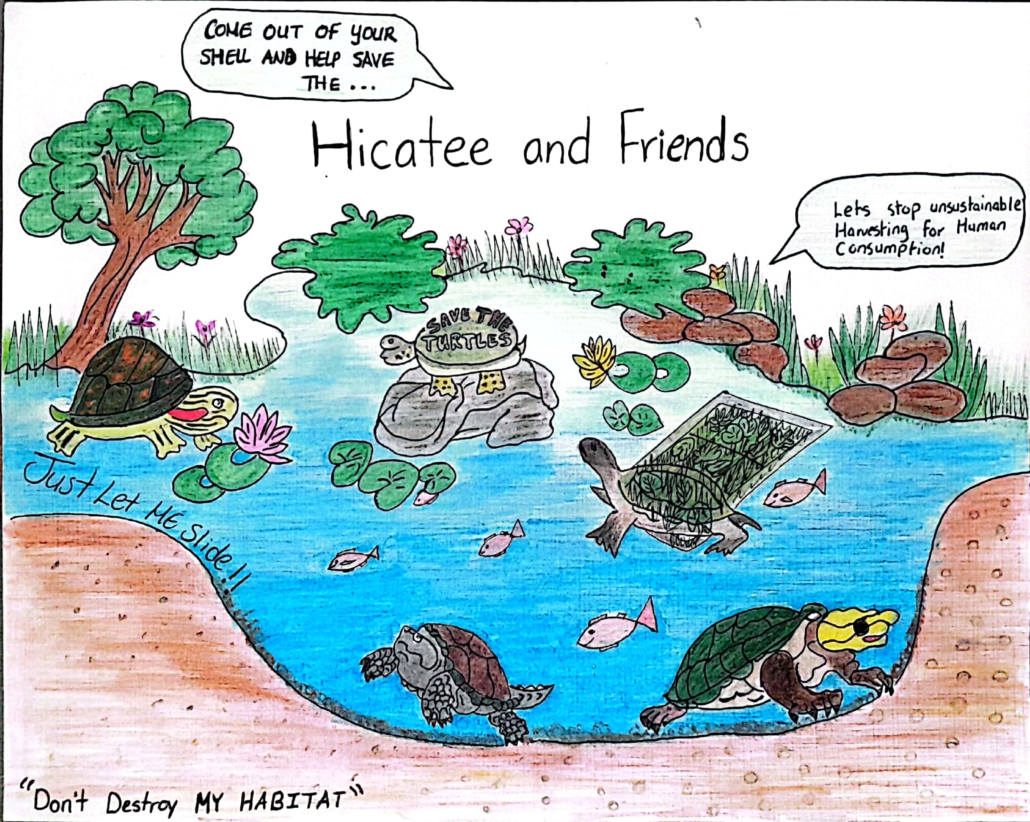
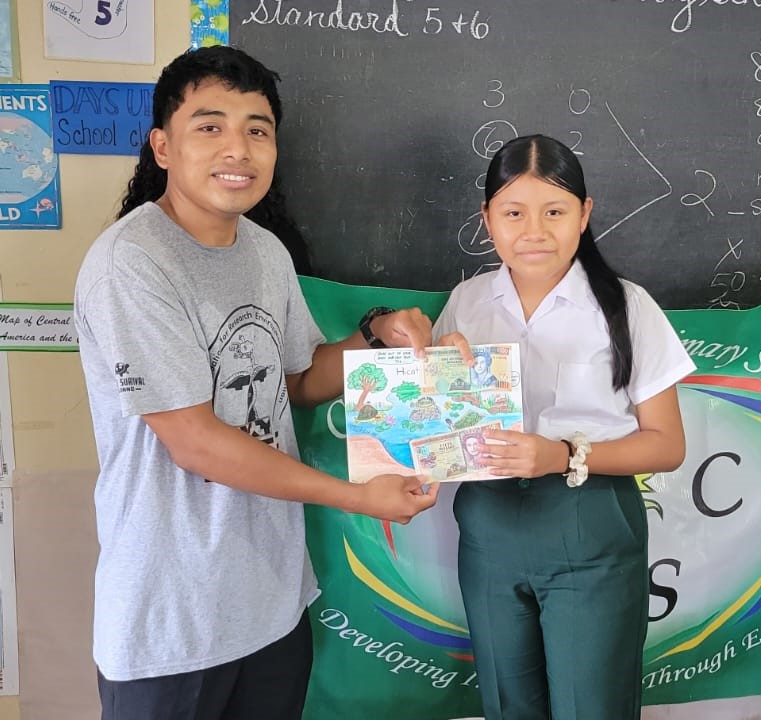
What some might consider arduous tasks—such as hiking or driving through six miles of rough terrain during the rainy season—became experiences I cherished. They offered me the chance to immerse myself in lush forests, listen to the sounds of wildlife, and witness the beauty of nature firsthand. These moments have deepened my connection with the environment and have shaped my journey.
After completing my associate’s degree from IJC in December, I was fortunate to join the team full-time. I’m incredibly thankful for all I’ve learned at BFREE and am excited to continue growing with the organization. Through my time at BFREE, I’ve developed a deep connection with nature that I never imagined. It’s also allowed me to pursue my passion for cameras. Filming and being filmed while participating in conservation efforts has always been my dream. Now, I’ve evolved from a nature enthusiast into an aspiring photographer and videographer, eager to tell my story through my own lens.
As the current Wildlife Fellow, I’m excited for the opportunities ahead to grow and contribute to the ongoing efforts to save the Hicatee. Inspired by the paths laid out by past fellows like Jaren, Jonathan, and Barney, I aim to continue their important work and highlight the impact BFREE has had on individuals like me.
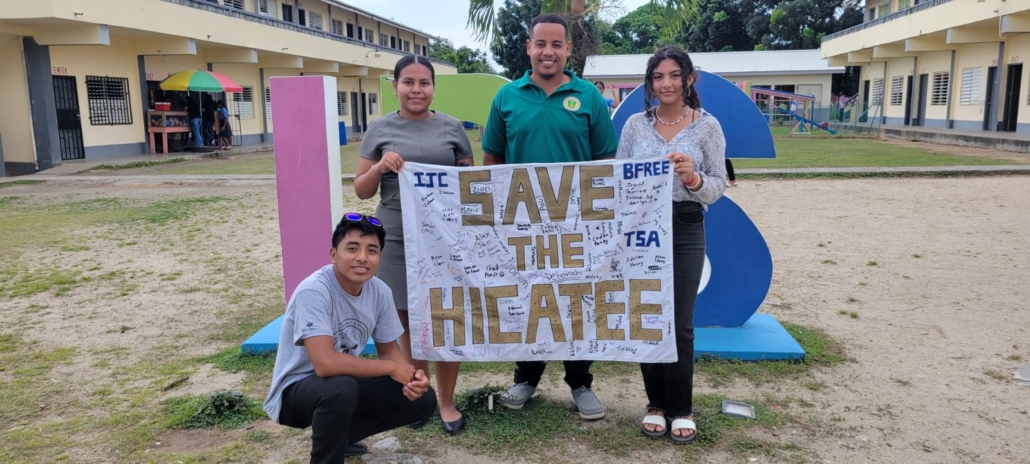
Special Thanks: I am deeply grateful for the support and guidance from my Independence Junior College family, who have been instrumental in helping me reach this point.

